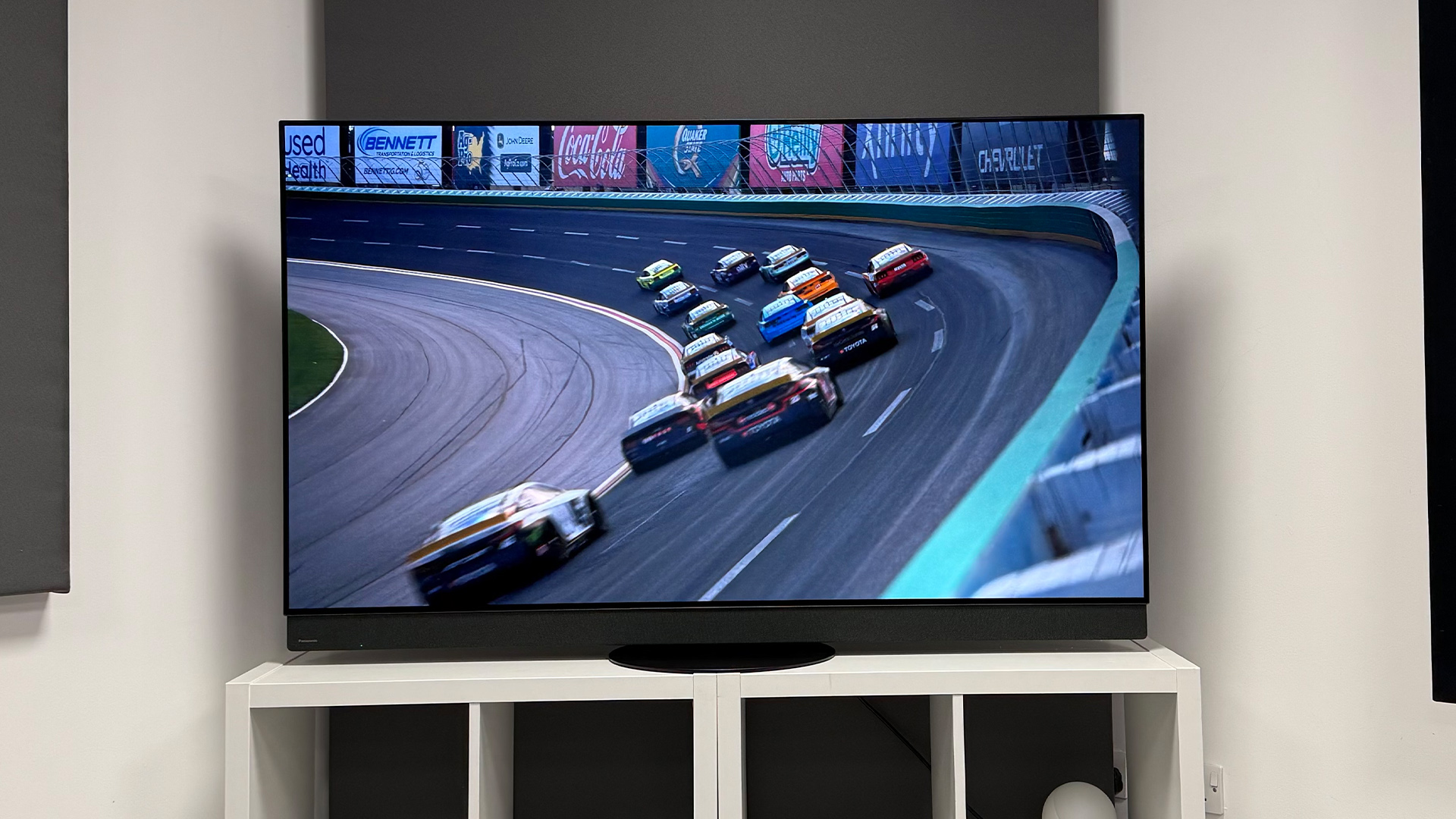What Hi-Fi? Verdict
The AT-LP7 is very likely the best turntable any manufacturer has ever built that sells at the price Audio-Technica is currently asking for it.
Pros
- +
Inbuilt MM/MC preamp
- +
Adjustable tonearm height
- +
Removable headshell
Cons
- -
Speed adjustment
- -
Non-hinged cover
- -
USB output
Why you can trust What Hi-Fi?

This review and test originally appeared in Australian Hi-Fi magazine, one of What Hi-Fi?’s sister titles from Down Under. Click here for more information about Australian Hi-Fi, including details on how to subscribe.
Dylan might have called it a simple twist of fate.
In 1952 Hideo Matsushita, at just 22-years of age, landed a plum job at Tokyo’s Bridgestone Museum of Art where one of his duties was to organise concerts to promote LP records which had just arrived in Japan.
One of the chief difficulties in presenting these concerts was the reliability and performance of the phono cartridges available at the time, so in 1962, after deciding there was a future in building reliable high-quality phono cartridges, Hideo rented a small warehouse in Shinjuku, just across from the Imperial Palace, hired three employees, registered Audio-Technica as a brand-name and started building the AT-1 stereo phono cartridge, his first product.
Well before the time of Matsushita’s death in 2013, Hideo had turned Audio-Technica into a global company building not only phono cartridges, but also headphones, microphones, copper and optical fibre cables, visible-laser collimators and—as evidenced by this review—tonearms and turntables.
The current president of Audio-Technica Corporation is Hideo’s son, Kazuo Matsushita.
Equipment
The Audio-Technica AT-LP7 (costing about £600) is the latest in a long line of turntables made by Audio-Technica, many of which were designed specifically for the professional DJ market. It’s a two-speed (33 and 45rpm), belt-driven deck that comes fitted with a J-shaped tonearm fitted with a removable AT-HS10 headshell. Naturally the headshell itself is in turn fitted with an Audio-Technica cartridge… in this instance one from the company’s 500-Series line, the VM520EB moving-magnet phono cartridge, which has a 0.3×0.7 bonded elliptical stylus and Audio-Technica’s ‘dual magnet’ geometry, where the two magnets are positioned in such a way as to mirror the angles of the groove walls. The stylus is easily removable, enabling easy, cost-effective stylus replacements when necessary (and easy upgrades, as you’ll discover later in this review).
A moving-magnet/moving-coil phono preamplifier is built into the AT-LP7, obviating the need for an external one, so you can plug the AT-AT7’s output directly into the line input of any integrated amplifier. However, if you’d prefer to use your own phono preamplifier, the internal preamplifier can be switched out of circuit.
The latest hi-fi, home cinema and tech news, reviews, buying advice and deals, direct to your inbox.
The single-piece platter of the AT-LP7 is 20mm thick and is made from a non-resonant polymer known as polyoxymethylene. The platter is not fitted with a slip-mat—it’s intended that you place your LPs directly onto the platter surface… though you could easily add an after-market slip-mat (or non-slip mat) if you’d rather… which I’d personally rather, so I did. Adding a mat is made super-easy because the J-shaped tonearm enables easy vertical adjustment—even ‘on-the-fly’ if you’d like, while the record is playing—so you’ll always be able to set the vertical tracking angle (VTA) exactly, irrespective of the thickness of the mat. Also, if you decide to fit some cartridge other than the VM520EB, you’ll be able to set the correct VTA for that cartridge (which might be different from that of the VM520EB).
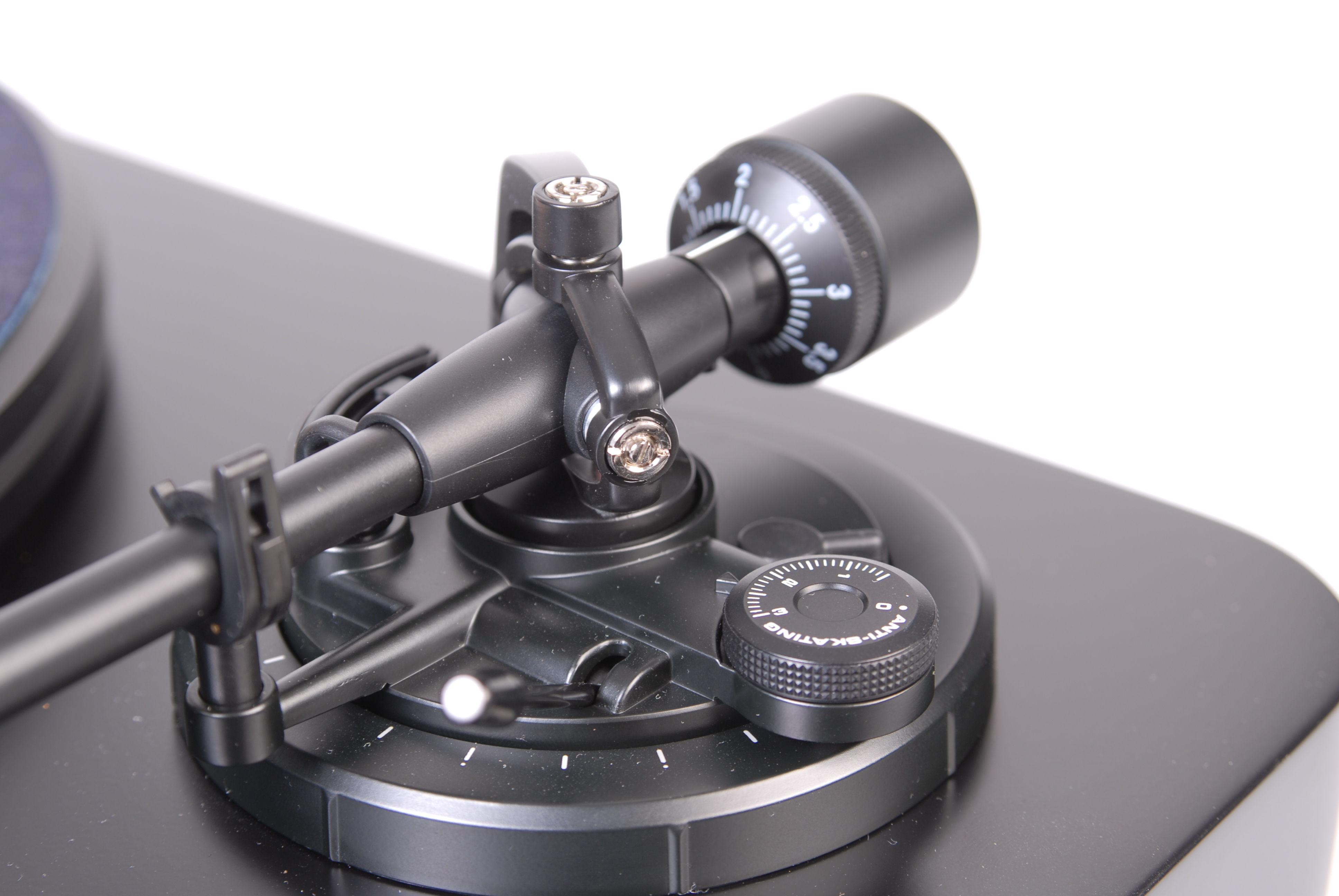
Adjusting the height of the tonearm is super-easy, because you just flick a tiny locking knob on the tonearm post behind the anti-skate dial, then turn a large ring around the periphery of the base of the tonearm post clockwise (looking from the top) to raise it, and anticlockwise to lower it. Once you’ve correctly positioned it, you just use the locking knob to lock it into position (but give it a firm push, because otherwise it might not lock into place). Audio-Technica correctly states that you should adjust the tonearm height so that the tonearm is parallel to the record surface. This is good advice, but it’s really a starting point, because after you’ve done this, you should play several LPs while raising the arm a little and dropping it a little, all the while listening for the best sound quality, then use that setting, even if the tonearm is not quite parallel. Note also that you may also have to adjust tonearm height depending on the thickness of the LPs you play—up for thick LPs, down for thin ones.
The platter—which despite being polyoxymethylene weighs in at a substantial 2.07kg—is driven by a flat rubber drive belt that runs around the periphery of the platter and connects to a d.c. drive motor that is not only elastomerically isolated from the turntable plinth, but whose drive pulley is also elastomerically isolated from the motor. The d.c. power for the motor is provided by an external 12V/2000mA plug pack that, rather surprisingly, is actually made by Audio-Technica itself. (Most manufacturers source their plug-packs in the country in which their product will be sold in order that they don’t have to pay for product compliance certification.)
As indicated earlier in this review, the Audio-Technica AT-LP7 has a built-in phono pre-amplifier whose use means you can connect directly to any integrated amplifier, using any spare line-level input on that amplifier. The output of the inbuilt phono preamplifier is via two gold-plated RCA sockets at the rear of the turntable plinth. Alongside these sockets is a Line/Phono switch (for turning the phono preamplifier on and off) and a MM/MC switch which is set according to whether you’ve installed a high-output cartridge (MM) or a low-output device (MC). There’s also a ground (GND) terminal and a d.c. power socket (tip positive).
What the AT-LP7 does not have is a USB output, which otherwise would have allowed you to ‘digitize’ whatever LPs you were playing. I would not normally mention this in a turntable review except that since Audio-Technica provides USB outputs on several of its lower-priced models, including the AT-LP5, it would have seemed to me to have been fairly simple and cost-effective to have included a USB output on the AT-LP7. An opportunity missed? Perhaps on the AT-LP7 MkII?
Audio-Technica rates the output voltage of the AT-LP7 as 4.5 mV if you’re using the ‘phono’ setting and the VM520EB cartridge, and 280mV if you’re using the ‘Line’ setting and the VM520EB cartridge (both referenced to a 1kHz sine wave recorded at 5cm/sec.)
If you are using the internal phono preamplifier, its gain is specified as being 36dB (MM) and 56dB (MC).
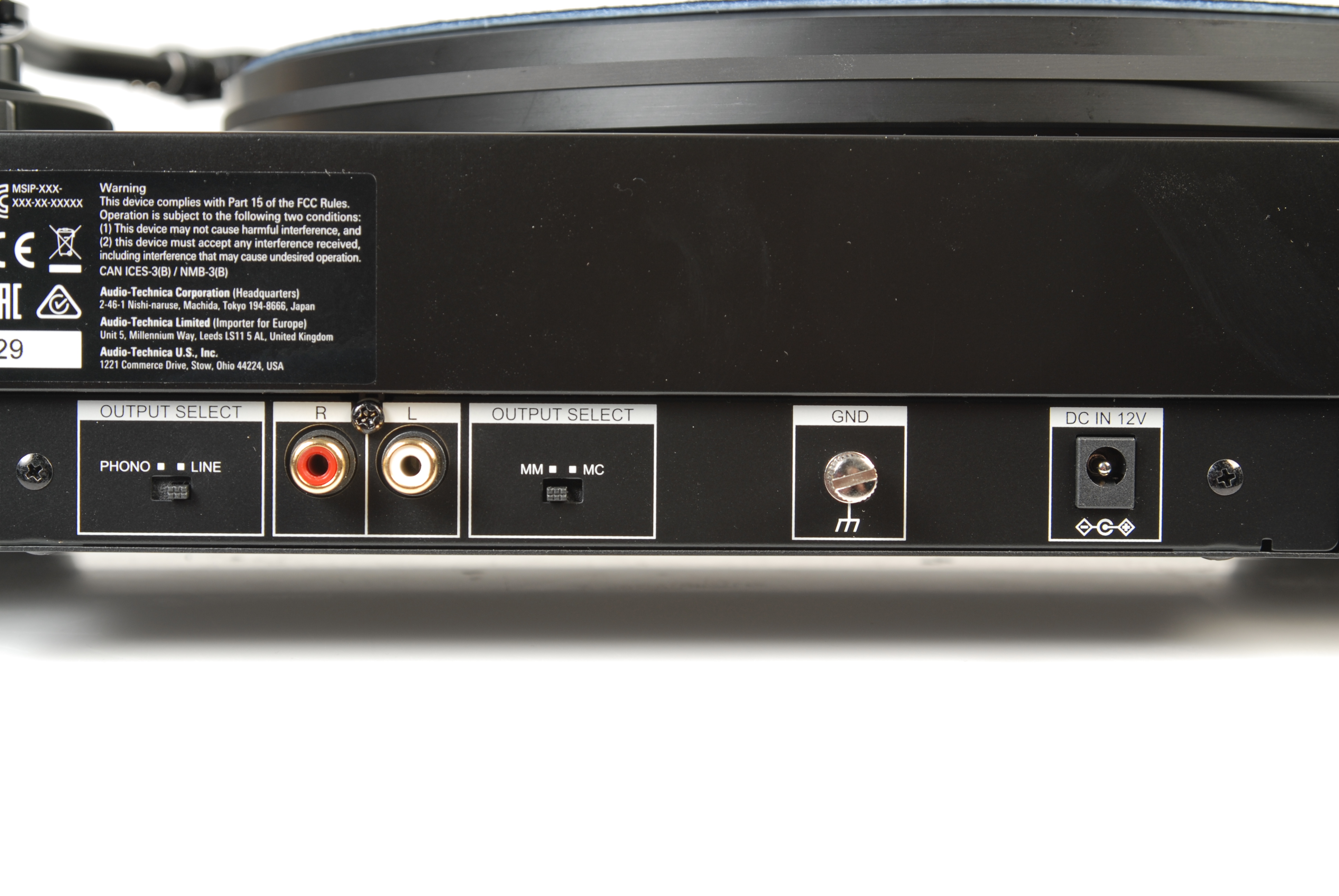
The Audio-Technica AT-LP7 measures 450×352×157mm (WDH) and weighs 8.3 kg. Every turntable comes supplied with a smoked Perspex dustcover that has a ‘lip’ around it so that it fits down over the plinth like a lid. It’s quite a neat arrangement, but I think I would have preferred a hinged dust cover because the design of the one provided means that every time you want to change an LP—or change sides on an LP—you have to remove the dustcover, find somewhere to put it while you’re making the change, then place the cover back on the plinth, all the while being careful not to accidentally catch the tonearm counter-weight during the process of removal and replacement.
Listening sessions
The Audio-Technica AT-LP7 is so easy to assemble that you’re unlikely to need to use the Owner’s Manual (supplied as hard copy with the turntable, but also available for download from Audio-Technica’s website as a pdf) unless you’ve never previously owned and used a turntable.
Basically, it’s simply a matter of fitting the platter over the (sealed) bearing assembly, wrapping the belt around the platter and drive pulley (Audio-Technica’s Owners’ Manual shows you doing this by hand, but I’d recommend using cotton gloves to ensure oils from your fingers don’t transfer to the drive belt), levelling the turntable on its four elastomerically isolated feet, fitting the headshell and counterweight to the tonearm, setting the tracking force to 2.0 grams (recommended for the VM520EB), adjusting the tonearm height, then setting the anti-skating dial to ‘2’ and the output select switch to ‘MM’. Once that’s all done, plug in the d.c. cable from the plug-pack, choose whether you want to use the internal preamplifier or not (line if you do, phono if you don’t), then connect the supplied interconnect cable to both the turntable and your amplifier.
One thing that confused me during installation was that the cartridge appeared to bear no markings of any kind (though since it comes supplied pre-installed in the headshell, the top of the cartridge could have been marked, but the markings not visible) but the flip-down plastic stylus guard had the serial number VMN20EB, when I was expecting the number to be VM520EB.
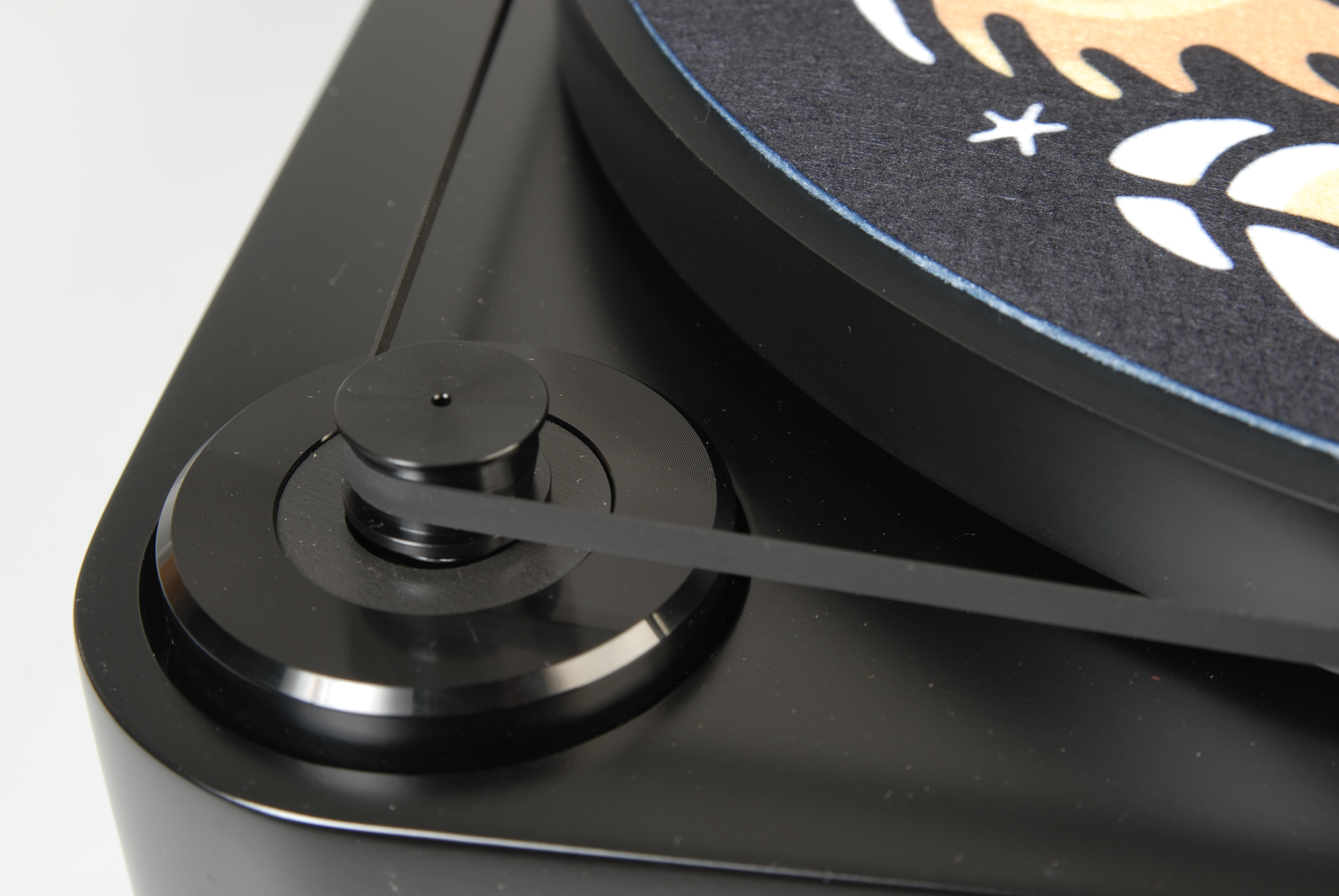
It turned out that the Audio-Technica’s local Australian distributor, Technical Audio Group, didn’t know how the person who’d reviewed the AT-LP7 before me had treated the cartridge, so it decided to err on the safe side and install a new stylus. This stylus replacement (which is exactly the same as the one supplied with the VNM520EB) is called the VNM20EB. In the process of working all this out, I also learned that the VM520EB cartridge retails in Australia for $259 (RRP) and the replacement stylus for $129 (RRP).
Cartridge alignment is, of course, crucial to performance, so I checked that the one fitted to the AT-LP7 had been aligned correctly using my own Dr Feickert Alignment Protractor (NG) and found it had been installed perfectly. Because the cartridge comes pre-installed in the headshell, this means that the alignment is being done perfectly in Audio-Technica’s own factory. You can, of course, check alignment yourself, using your own protractor, in which case I would recommend the Dr Feickert, which costs AU$290. Yes, there are cheaper versions (Pro-Ject’s ‘Align-It’ costs AU$190) that will do the job, but the good doctor’s version is the best-made, and the most accurate.
My next check was for speed, of course, though this was more for my own personal interest since there’s no speed adjustment on the AT-LP7, so there was nothing I could do about it if I did find that it was running either slow or fast. I knew the turntable was going to be tested by Newport Test Labs, so I could have waited but I had to get my review into the editor before I sent the turntable to the lab for testing. (Editor’s Note: As a general rule, I like to have a reviewer’s copy before any product goes off for lab testing, not least because products such as loudspeakers and amplifiers sometimes fail due to the stresses caused by laboratory test signals.) I know it’s not a perfect test, but my strobe card’s stripes were stable at both 33 and 45rpm, so that’s close enough for me! (And for those expecting perfection for whatever reason, LPs aren’t always recorded at the correct pitch anyway, to help with cutting and pressing, so I don’t consider exact speed all that important. I also don’t have perfect pitch.)
Speed selection is simply a matter of turning the speed selector knob conveniently located at the front left of the plinth, so there’s no fiddly belt-moving to do, like there is on turntables that have stepped pulleys. No matter whether you select 33 or 45, an LED at the ‘12 o’clock’ position relative to the speed adjustment knob glows blue. Rather annoyingly (since it has the universal ‘power’ symbol alongside it), the LED doesn’t glow at all when the switch is in the ‘Off’ position, so you have no idea whether power is available or not. How simple would it have been to use a chameleon LED and have it glow red when the speed switch was in the ‘Off’ position to indicate that power was connected? Another opportunity missed?
I also think Audio-Technica missed an opportunity to demonstrate that the AT-LP7 has a servo inside to control platter speed. Instead of showing a continuous blue, irrespective of whether the platter is coming up to speed or running at the selected speed, Audio-Technica could have engineered it so that the LED flashed until the platter came up to speed, and then glowed continuously once correct speed had been established. And, since you can buy tri-colour LEDs, perhaps we could have had different colours for 33 and 45… oh well, perhaps on the AT-LP7 MkIII…
As for the turntable coming up to speed, it does that very quickly indeed, so there’s no waiting around before you lower the stylus! And once up to speed, the platter maintains that speed very accurately, because I could not detect any pitch instabilities (of either the wow or the flutter varieties) when playing music, either at 33 or 45rpm.
I also couldn’t hear any low-frequency noise I could have attributed to either the AT-LP7’s drive motor or platter bearing, so any noise made by the motor and bearing is so low that it’s inaudible. The turntable’s immunity to external vibration is also very good. I tested this by resting the stylus on a stationary LP then stomping around the room and giving the cabinet on which the Audio-Technica was sitting a good thump with the butt of my fist. I was listening for noise, as well as watching one of my woofer cones, in case I was creating vibrations too low for me to hear. Although I could hear some noise when I turned my amplifier’s volume up high enough, and did observe some cone motion at this volume setting, I was satisfied that at normal listening levels, the turntable’s isolation is more than adequate for high-fidelity listening.

The tracing ability of the Audio-Technica VM520EB’s stylus and cantilever was very good, but when playing ‘torture tracks’ such as the cannons in Tchaikovsky’s 1812 or playing tracing ability tracks on test discs (Shure ERA IV), some minor limitations were evident. The good news is that you can upgrade the stylus on the VM520EB to improve performance. The ‘standard’ stylus is a bonded elliptical diamond, but you can upgrade to a nude elliptical diamond by using a VMN30EN replacement stylus, or to a nude MicroLine diamond by using a VMN40ML replacement stylus. There are also Shibata (VMN50SH) and Line Contact (VMN60SLC) stylus replacements available. You can even ‘downgrade’ by fitting a bonded conical diamond (VMN10CB).
Apart from performance, there’s another reason you might want to upgrade, which is extended life. Audio-Technica estimates the useful life of its elliptical styluses at 500 hours, that of its MicroLine styluses at 1,000 hours, and that of its Shibata and Line Contact styluses at 800 hours. As for reasons for downgrading, one is that conical styluses are often better at playing worn records, plus they’re less costly, so if you’re regularly playing worn records, it would be more cost-effective to use a conical stylus rather than wear out (and possibly damage) an expensive elliptical or MicroLine stylus.
As it was, I thought that the sound quality of the Audio-Technica VM520EB fitted with the standard bonded stylus was excellent… so good in fact that I can’t imagine you’d improve on the sound quality by upgrading it. Yes, you’d get improved tracking and less wear on your records with a better stylus, but I can’t see that you’d audibly improve on the sound quality itself.
As for that sound quality, I found that the bass was rich, warm and full-sounding but at the same time not overpowering, which what I sometimes hear listening to some cartridges… and quite expensive ones too, priced at many multiples of what Audio-Technica is asking for the VM520EB. I heard no better example of the Audio-Technica VM520EB’s bass ability than when listening to Keith Jarrett’s left hand keyboard work on the track In Front, from his album ‘Facing You’, which has just been re-mastered and re-released by ECM on 180gm vinyl. The track is a kind of gospelly romp that’s propelled along by figurations in Jarrett’s left hand, leaving his right free to both form and punctuate the overall melodic structure. The VM520EB handles the powerful sound of the piano beautifully and later on, the extraordinary transients and staccato effects Jarrett delivers in the track Ritooria.
More proof of the VM520EB’s ability to deliver superb bass sound is exemplified by its superb delivery of double-bass, along with drums and percussion on Norman Connors’s album ‘Love from the Sun’ (Pure Pleasure Records). But the midrange was also incredibly good, nowhere better evidenced than on the hard-driving Kumakutcha, where the sound of Gary Bartz’s soprano sax is almost unbelievably real. The Audio-Technica VM520EB also handles the complexity of the rhythms on this track with aplomb and the high-frequency harmonics issuing from Eddie Henderson’s trumpet leapt from my loudspeakers without any of the stridencies that can sometimes accompany reproduced trumpet sound.
As for the piano sound, the Audio-Technica VM520EB is so accurate and true-to-life that you know you’re listening not to a real piano, but to a Fender Rhodes instantly, and then, after a few moments, you also know that it’s Herbie Hancock who’s playing it. You might not be able to guess who’s delivering the vocalise on Revelation just from the sound of her voice—despite the accuracy of the VM520EB’s rendition—but if you know anything about Connors at all, you’ll probably guess that it’s Dee Dee Bridgewater… and you’d be right.
If you’re a vinylphile—which I guess you’d have to be if you’re reading this review—you must, like me, be over the moon at the number of re-mastered re-releases that are coming onto the market. I was overjoyed when one of my boyhood favourites recently popped up—none other than Ry Cooder’s ‘Paradise And Lunch’ album, originally released back in the 70s by Warner Brothers, but now available on 180g vinyl from Speakers Corner. I think it was this album that actually introduced me to Ry Cooder, not least because of the track Jesus on the Mainline, but also because I was heavily into blues back then (still am) and his treatment of I’m A Fool For Cigarettes/Feelin’ Good was a revelation to me, as was his version of Bo Diddly’s Americana. I was also knocked out by Cooder’s musicianship on Ditty Wa Ditty, where he duets with none other than the legendary Earl Hines. The VM520EB’s sound—and the precision of the timing of the AT-LP7 itself, will allow you to hear immediately whether the drums are being played by Milt Holland or Jim Keltner.
Verdict
Audio-Technica’s publicity says of the AT-LP7 that it’s “the best turntable we’ve ever built”. I totally agree, but would add that it’s very likely the best turntable any manufacturer has ever built that sells at the price Audio-Technica is currently asking for the AT-LP7. ‘Nuff said?
Labratory test report
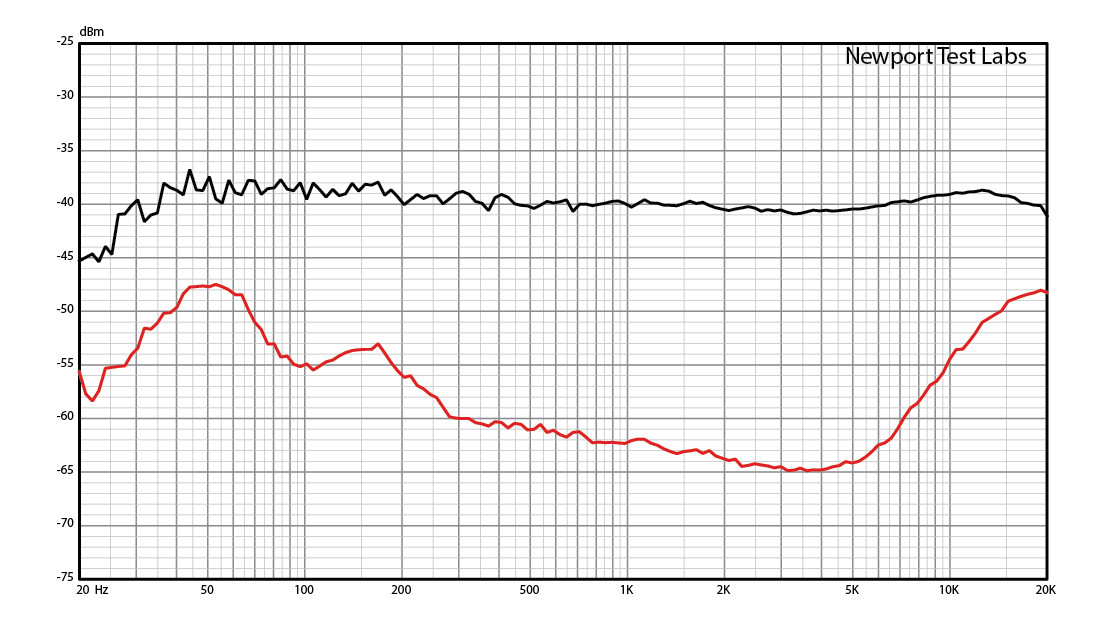
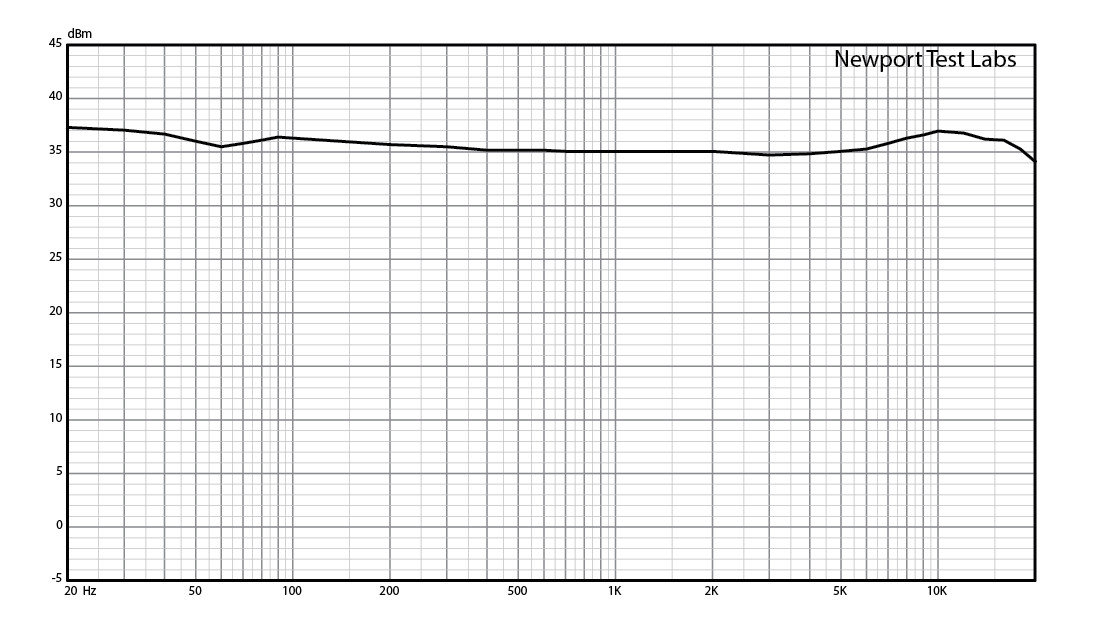
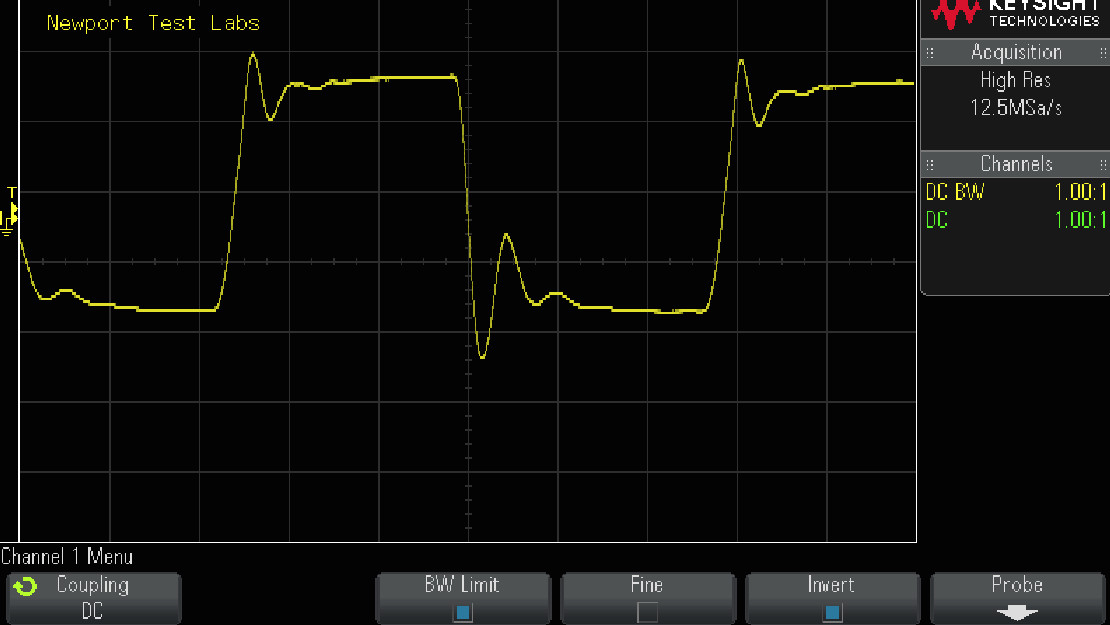

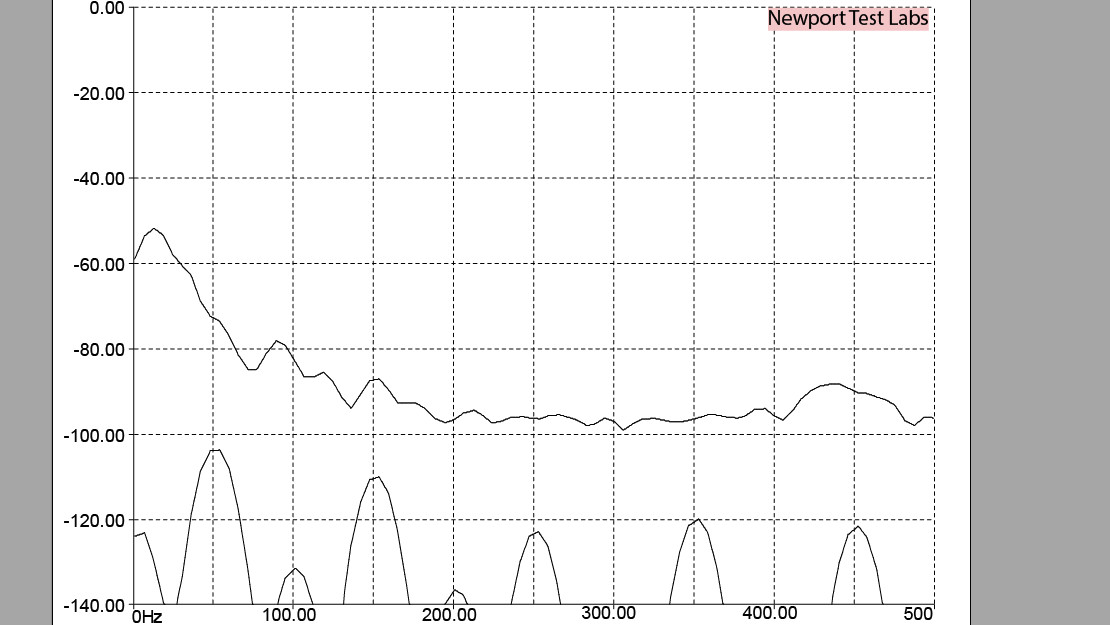
Newport Test Labs first measured the frequency response and channel separation of the Audio-Technica VNM20EB cartridge with pink noise test signals. Along with square waves, pink noise is one of the most difficult test signals for any phono cartridge, since it requires the stylus to simultaneously reproduce all frequencies across the audio spectrum at the same time, rather than just a single frequency at a time, which is the test used by cartridge manufacturers to specify the response of their products.
The result of this test is shown in Graph 1 (above) and you can see that the Audio-Technica VNM20EB delivered an outstandingly linear and extended frequency response, even with this difficult test signal. Overall Newport Test Labs measured the VNM20EB’s response at 26Hz to 20kHz ±2dB. Channel separation at 1kHz was also excellent, at 22dB. It did diminish somewhat at low frequencies, to a minimum of 12dB at 50Hz, but it also increased a little at higher frequencies, with a best result at 4kHz of 24.5dB.
Graph 2 shows the frequency response of the Audio-Technica VNM20EB measured using a swept sine wave, where only a single frequency is being reproduced and measured at any instant of time… which is obviously a much easier task for any phono cartridge. As you’d expect, the resultant frequency response measurement was even better than that shown in Graph 1, with the Audio-Technica VNM20EB this time delivering a frequency response of 20Hz to 20kHz ±1dB.
The oscillogram above shows the response of the Audio-Technica VNM20EB to a recording of a square wave. It’s a very good-looking 1kHz waveform exhibiting a very fast rise time, minimal overshoot and quickly damped ringing. The wave is a little asymetrical, but it’s an impressive performance on this difficult test signal.
Distortion at 1kHz (re 3.54cm/sec) is shown in Graph 3 (above). You can see there’s a second harmonic component at –40dB (1.0%), a third harmonic at –55dB (0.177%), a fourth harmonic at –66dB (0.05%) then a fifth harmonic at –75dB (0.017%). There are three further higher-order harmonics visible (6th, 7th, 8th) but all are down around –80dB (0.01%). It isn’t only the performance of the cartridge that is visible on this graph, but also the background noise (rumble) of the AT-LP7 and you can see that above 500Hz or so, that noise is more than 80dB below signal level.
The output of the Audio-Technica AT-LP7’s phono stage was measured by Newport Test Labs as 375mV when the cartridge was tracing a 1kHz sine wave recorded at 3.54cm/sec, which would put the actual output level of the VNM20EB cartridge at around 5.5mV given the specified gain of 36dB.
The low frequency noise of the Audio-Technica AT-LP7 is shown in Graph 4. The higher trace shows the noise when the platter is rotating, measured on the platter itself with a ‘silent’ test pressing. The seeming ‘peak’ at the extreme left of the graph is not ‘rumble’ per se, but the tonearm/cartridge resonant peak, nicely (and correctly) positioned below the audible frequency range. Rumble is 60dB down at 25Hz (referenced to 5.42cm/sec), improving to more than 70dB at 50Hz and better than 80dB down above 70Hz. The trace at the bottom of the graph is the background noise measured while the stylus was positioned on the platter while it was stationary and, given that the peaks are at 50Hz and multiples (100Hz, 150Hz, 200Hz etc) they’re very obviously showing background mains-frequency hum and components. All are more than 100dB down and would not be audible even when music was not playing.
Newport Test Labs measured the speed accuracy of the Audio-Technica AT-LP7 as being exact at both 33.33 rpm and 45 rpm and measured wow and flutter at 0.04% RMS unweighted, which is not only an outstandingly good result but also considerably better than Audio-Technica’s specification of 0.08% RMS weighted. The DIN-weighted figure measured by Newport Test Labs was 0.03%.
Overall, the measured performance of both the Audio-Technica AT-LP7 itself and the Audio-Technica VMN20EB cartridge was outstanding in every respect
Australian Hi-Fi is one of What Hi-Fi?’s sister titles from Down Under and Australia’s longest-running and most successful hi-fi magazines, having been in continuous publication since 1969. Now edited by What Hi-Fi?'s Becky Roberts, every issue is packed with authoritative reviews of hi-fi equipment ranging from portables to state-of-the-art audiophile systems (and everything in between), information on new product launches, and ‘how-to’ articles to help you get the best quality sound for your home.
Click here for more information about Australian Hi-Fi, including links to buy individual digital editions and details on how best to subscribe.


